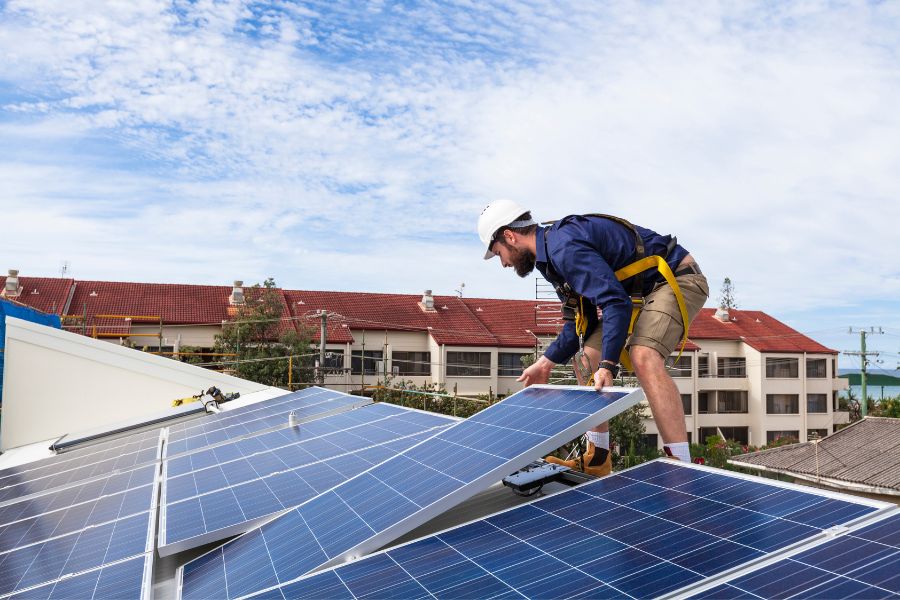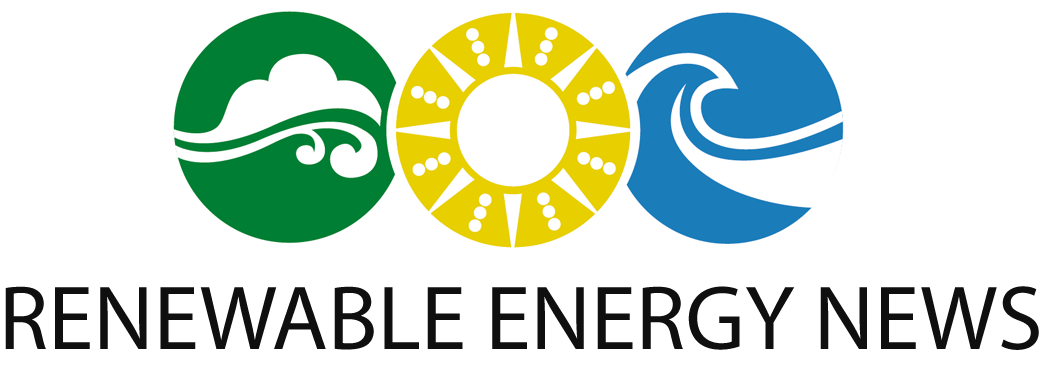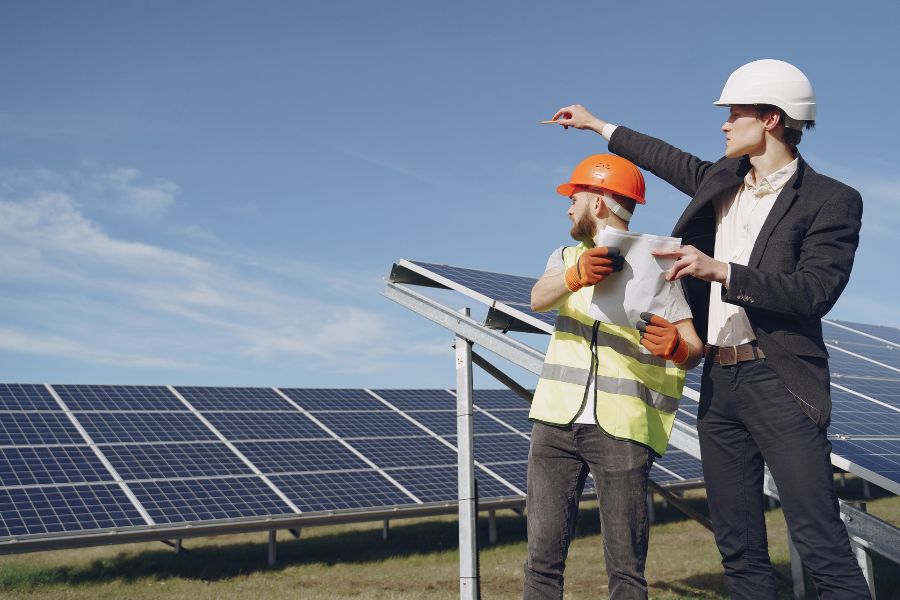Solar power is making waves as a clean and sustainable energy source worldwide. And in a place like Ireland, where the weather often throws cloudy skies and frequent rain into the mix, making the most of solar panels is a top priority. One of the keys to unlocking their full potential? The angle at which they’re set up. Regardless of whether you use a 5KW or 10KW solar system, the efficiency is hinged on the angle. In this article, we’re diving into the best angle for solar panels in Ireland and how they can make a difference for homeowners and businesses looking to tap into the sun’s energy.
Getting to Know Solar Panel Angles
Understanding solar panel watts and angles is fundamental when installing a solar power system in Ireland. Solar panels, akin to sun-catching magic devices, transform sunlight into electricity. The angle of installation plays a pivotal role in this process. Known as the tilt angle or tilt angle of inclination, it determines how directly solar panels face the sun, thus impacting electricity generation.
When you install solar panels in your solar panel system, setting the right tilt angle is like choreographing a dance with the sun. In Ireland’s variable weather, it’s crucial to optimize energy production. This typically means going steeper than the latitude-based angle, ensuring your solar panel installation captures as much sunlight as possible, especially during cloudy days. A proper tilt angle is key to maximizing the benefits of your solar panel installation, making it a smart investment for your energy needs and the environment.
Consider the Factors
To figure out the best angle for solar panels in Ireland, we’ve got to consider a few things:
Latitude
Latitude plays a significant role in determining the optimal solar panel angle when setting up a solar PV system in Ireland. At approximately 53 degrees North latitude, the tradition is to align solar panels with the latitude of your location. However, the weather in Ireland, often characterized by cloudiness and overcast skies, challenges this convention.
In the pursuit of maximizing solar energy production through your solar installation, adjusting the angle becomes crucial. While the latitude-based angle may work well in sunnier climates, Ireland’s climate demands a more tailored approach. To harness the full potential of your solar PV system, opting for a steeper angle than the latitude suggests is often the wiser choice. This adjustment allows your solar panels, even on a south-facing roof, to capture more sunlight, making your solar installation a more effective and sustainable source of clean energy despite the ever-changing Irish weather.
Weather Patterns
When deciding on the optimal angle for solar panel orientation in Ireland, weather patterns play a significant role. Ireland’s reputation for frequent cloudy and rainy days means that solar panels need to work harder to capture sunlight whenever it can peek out from behind the clouds. To make the most of your solar energy system, it’s often necessary to go beyond the conventional latitude-based angle.
By adjusting the solar panel direction to a steeper angle, you can ensure that your solar PV systems are better equipped to harness available sunlight effectively. This strategic approach maximizes the energy output of your solar energy system, even in the face of Ireland’s ever-changing weather. So, when considering the optimal angle and direction for your solar panels, remember that adapting to local weather patterns is key to optimizing your solar energy production.
Seasonal Changes
Adapting the angle of your solar panels to the changing seasons is a smart move when installing a solar power system, particularly in Ireland. In optimizing your solar panel orientation on your south-facing roof or flat roofs, seasonal adjustments play a pivotal role.
During the winter months, tilting your solar panels more upright is advantageous. This adjustment allows them to capture the lower-angle sunlight in the winter sky. By doing so, your solar power system can make the most of the available sunlight and maintain energy production efficiency during the shorter and often gloomier days.
Conversely, as summer arrives and the sun ascends higher in the sky, flattening out your solar panels is the way to go. This orientation modification ensures that your solar power system captures the higher-angle sunlight effectively, maximizing energy production during the longer and sunnier days of the season. Incorporating these seasonal tweaks into your solar panel orientation strategy is a proactive approach to harnessing solar energy efficiently throughout the year, making your investment in solar panels even more rewarding.
Panel Type
When installing solar panels and determining the optimal angle and direction for your solar panel orientation, it’s essential to consider the specific type and design of your panels. In the world of solar energy, not all solar panels are created equal.
Different types of solar panels, such as monocrystalline, polycrystalline, and thin-film, have varying efficiency levels and characteristics. Some panels may perform better at specific angles and directions than others. For example, high-efficiency monocrystalline panels are known for their adaptability and can yield good results at a range of angles, making them versatile in various solar panel orientations.
Thin-film panels, on the other hand, are more tolerant of off-angle sunlight and can work efficiently even with less-than-ideal solar panel orientation. Therefore, understanding the specific properties of your panels and their compatibility with your chosen angle and direction is vital to ensure optimal energy production from your solar panel installation. Taking panel type into account when deciding on the right angle and direction for your solar panels can lead to a more efficient and cost-effective solar energy system tailored to your needs.
Finding the Sweet Spot
In Ireland, where weather can be unpredictable, the best angle for solar panels is often steeper than the latitude-based angle. For most places in Ireland, a tilt angle of around 35 to 45 degrees is usually the sweet spot for fixed solar panel setups. That steeper angle helps panels soak in more sunlight during Ireland’s shorter and cloudier days.
But wait, there’s more. Adjustable solar panel setups, known as tracking systems, can crank up the performance by following the sun’s path throughout the day. These systems are like sun-chasing pros, adjusting the tilt and orientation of your panels to grab every ray of sunshine.
If aesthetics are high on your list, you can go for a shallower angle, closer to the latitude angle, so your panels blend better with your roofline while still pulling in a good amount of electricity.
Keep These Factors in Mind
As you’re plotting your perfect solar panel angle, there are a few things to keep in the back of your mind:
Shading
Avoid shading at all costs when positioning your solar panels. Even minimal obstructions like trees or nearby buildings casting shadows can significantly impact their efficiency. Shading can create “hotspots” and reduce the overall energy production of your solar panels. To maximize efficiency, ensure your panels receive uninterrupted sunlight throughout the day. Regularly trim branches or consider relocating your panels to an unshaded area if shading issues arise. This simple precaution can have a substantial impact on your solar panel system’s performance and the energy savings it provides.
Roof Condition
Consider your roof’s condition when determining the tilt angle for your solar panels. Steeper angles may require additional structural support due to increased weight and wind resistance, potentially raising your installation costs. Ensure your roof can safely accommodate the chosen angle to avoid unexpected expenses and complications during the solar panel installation. Assessing your roof’s condition beforehand allows for a smoother and more cost-effective transition to solar energy.

Local Rules
Local rules are a crucial consideration when determining your solar panel angles. It’s essential to check for any regulations in your area, especially in historic or protected zones. Some localities may restrict the angles you can use for your solar panel installation. Staying informed about these rules ensures that your solar project complies with local guidelines, preventing potential conflicts and ensuring a smooth installation process.
Maintenance
Maintenance is key to keeping your solar panels performing at their best. Panels installed at steeper angles may demand more frequent cleaning to prevent dirt and debris buildup. Cleaning your solar panels periodically ensures they capture maximum sunlight, optimizing energy production. Neglecting this maintenance task can lead to decreased efficiency, potentially reducing the overall output of your solar energy system.
Regular cleaning, especially after adverse weather conditions or during seasons with increased dust and pollen, helps preserve the effectiveness of your solar panels, ensuring they continue to generate clean and cost-effective electricity for your home or business.
Final Thoughts
Picking the best angle for solar panels in Ireland is a big deal for folks aiming to harness solar energy the smart way. Going steeper than the latitude-based angle is often the way to go, given Ireland’s cloudy days. But remember, your specific location, energy needs, and the type of panels you have can all play a part in finding that perfect angle. It’s smart to chat with a pro-solar installer who can check out your spot and recommend the ideal tilt angle to score maximum energy and savings. So, whether you’re looking to slash your energy bills or shrink your carbon footprint, choosing the right angle for your solar panels is a sunny step in the right direction.

